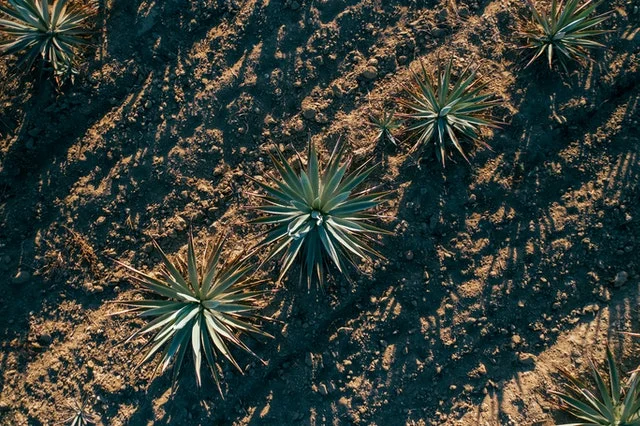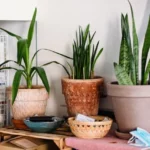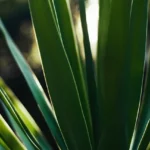Table of Contents
How To Care For Yucca Aloifolia
The Yucca Aloifolia looks a bit like a small version of a palm tree. If you’re after a medium-sized pot plant to bring some tropical vibes into your home, the Yucca Aloifolia could be the perfect plant for you.
It’s relatively easy to look after, and it can liven up any room of your house.
What does your Yucca Aloifolia require?
Some people might think the Yucca Aloifolia is hard to look after. In reality, if you can look after a Christmas tree, you can probably look after a Yucca Aloifolia.
You will need to give it water, light, and all of the stuff you need to give to most pot plants.
But considering how much of a tropical look it has, you’d be surprised at just how well it does in the home.
Light Requirements
If you’re keeping your Yucca Aloifolia indoors, the best kind of light will be bright but filtered. This will require you to keep it in a room with plenty of natural light, but don’t put it too close to the window.
A good idea might be to keep it in your office but keep the plant at the back of the room.
Of course, if you’re keeping it outside, the light it gets will be whatever light the sun wants it to have. But preferably, try placing it in a spot that gets plenty of sun.
Temperature Requirements
At night time, your Yucca Aloifolia should not go below 7C, and during the day, it shouldn’t fall below 9C. However, these temperatures are only the minimum.
The ideal temperature for Yucca Aloifolia is between 18 to 22C. In the wild, Yucca Aloifolia tends to live in hot climates, often in deserts. However, just because it lives in the desert doesn’t mean you have to.
Yucca Aloifolia is surprisingly good at adapting to new environments.
Soil Requirements
Of course, you will need to make sure that whatever kind of soil you use, it’s well-draining. Soil that cannot drain is more likely to give a plant root rot as the water that the roots cannot absorb will just sit there and attract bacteria and mould.
The best type of soil for Yucca Aloifolia is to make your own by combining sand, topsoil, and garden soil. All of these should be available from your local garden centre.
This will enable the soil to drain out excess water whilst still providing and holding all of the nutrients your plant needs.
Humidity Requirements
Yucca Aloifolia lives in the desert. It doesn’t like humidity. Too much moisture and the leaves could become mouldy.
But having said that, a little bit of moisture doesn’t kill it. So don’t be too worried if you have no choice but to keep in a naturally humid room.
If you notice dust forming on the leaves, you could mist it gently to remove the dust. But don’t mist it too much, as this may cause the leaves to grow mouldy.
How to Water
During the hot seasons of spring and summer, the Yucca Aloifolia should only be watered once a week. Before you water it, make sure the top 1-2 cm of the soil is dry. And be sure that you don’t overwater it- you only need to moisten the top of the soil.
When autumn starts, gradually water it less and less. When winter comes, you shouldn’t be watering it much more than once a month.
How to Fertilize
Fertilizing the Yucca Aloifolia is best done during the summer when the weather is warm. The plant is better able to absorb all of the nutrients you give it.
In the summer, you only need to give it a feeding once a fortnight, and when you do, the fertilizer should be diluted to 1/10th of the strength that the bottle recommends.
In the wild, Yucca Aloifolia is not used to being given nutrients very often. If you give it too much, it won’t be able to absorb all of them.
Extra tips for Yucca Aloifolia
So far, we’ve only talked about how to enable your Yucca Aloifolia to survive. Survival is easy; thriving is slightly more challenging.
Today, I want to talk about some of the ways that you can go the extra step for your Yucca Aloifolia to make it go from a living plant to a happy plant.
Pests & Diseases
Some of the most common living problems you’ll get with Yucca Aloifolia is root rot, mealy bugs, and red spiders.
Root rot is caused by overwatering. You can prevent it by not overwatering your plant.
Mealybugs and red spiders, on the other hand, can be unavoidable, but when they show up, just give the plant a quick spray of a weak insecticide, and the bugs will drop dead.
Pruning
Pruning is not just about making your plant look nice; it’s also how you enable it to grow up in the same condition.
When you prune your Yucca Aloifolia, do it in the months between February and May. At this time, the plant will be at its most fertile and, therefore, be better positioned to grow back missing limbs.
Yellow leaves should be removed, as they ruin the appearance and spread to the rest of the plant. However, to prevent any infections from accidentally going to the rest of the plant, you should wait for the yellow leaves to dry before cutting them.
If you want the Yucca Aloifolia to become as bushy and voluptuous as you would like it to be, you should leave at least 5 leaves on each branch.
Cutting branches should only be done if you want the plant to be smaller. Whilst leaves can grow back quickly, branches tend to take a lot longer to grow back.
Propagation
If you wish to propagate your Yucca Aloifolia, the steps are almost the same as with every other plant.
The first step is to cut off a leaf, making sure you use clean and sharp instruments without damaging the plant. Wait for 24 hours for the cut to dry.
Place the end of the leaf into a small pot of water and wait for 3-4 weeks for roots to form. Once you notice roots, move the plant into a pot with the soil mix we spoke about earlier.
It may take a few months or even years for the new Yucca Aloifolia to grow. But eventually, you will have a brand new Yucca Aloifolia. Which you are free to keep for yourself or give away to others.
FAQ
Are Yucca Aloifolias poisonous to humans?
Yes and no.
The Yucca Aloifolia stems are poisonous, and you should not eat them. The leaves, on the other hand, are edible.
They might not taste too good, but they are packed with all sorts of health benefits.
Do Yucca Aloifolias need sun or shade?
Yucca Aloifolia thrives best in the sun. Usually indirect sun. However, it’s fairly adaptable to most environments. SO don’t worry too much about getting the sunlight perfect.
Do Yucca Aloifolias come back every year?
Yucca Aloifolia will not grow back. Once it dies, it dies. Generally, you will have around 5 years of friendship with your Yucca Aloifolia plant.
It’s one of the plants that doesn’t lose its leaves and grows them back. It will have its leaves for its whole life. Once the leaves are gone, the plant is dead.
What is the Yucca Aloifolia good for?
Yucca Aloifolia leaves can help with a variety of health issues. This includes high blood pressure, headaches, stomach problems, and liver and gallbladder problems.
This isn’t just some new age mumbo jumbo; scientists agree that plants such as Yucca Aloifolia can be of massive benefit to our health.
Can Yucca Aloifolia kill you?
Yucca Aloifolia can kill you. But only if you eat the stems, branches, and roots. But even then, it’s very hard to do.
Once you digest a certain amount, you will start vomiting. If you want to die by eating Yucca Aloifolia, you will need to continue eating it between vomits. And it will take a lot before you die.
If you’re looking to kill someone, Yucca Aloifolia is not the best plant to use.
Can you eat a Yucca Aloifolia?
You can eat Yucca Aloifolia, but only the leaves. The most common way to consume it is to cut it and mix it with water.
Native Americans would often use Yucca Aloifolia as a form of natural medicine. It’s kind of similar to Aloe Vera in this way.
Common nicknames for Yucca Aloifolia?
Yucca Aloifolia has many nicknames; the most common one is its common English name, “Aloe Yucca”. However, there are even less formal terms.
Adam’s Needle, Bear Grass, Our Lord’s Candle, Spanish Bayonet. Most of these nicknames will have a cool story behind them.
Where is Yucca Aloifolia native to?
Yucca Aloifolia is native to the Southern USA and Mexico. It’s the kind of plant you might see in a wild west movie.
Generally, it will be found in desert environments, with lots of sand and not a lot of other life.
Is Aloe Yucca better than Aloe Vera?
Aloe Yucca sounds similar to another plant, Aloe Vera. Even though both of these plants have health benefits, they’re not related to one another. The Aloe Yucca is a type of yucca plant, whereas the Aloe Vera is a succulent plant.
Both the Aloe Yucca and Aloe Vera make excellent houseplants. So which one is best is purely whichever one you personally prefer.
Photo by Mikhail Nilov from Pexels


